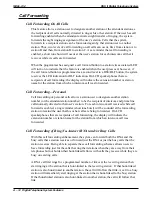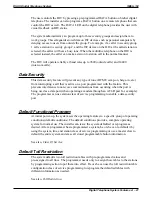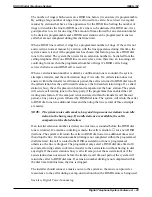
features that require periodic change by entering COS programming with another code
provided for this purpose. The station user can program individual stations for speed dial,
autodial and direct station selection (DSS) by entering COS with a code provided for that
purpose. Thus, COS programming is arranged with a hierarchical order from the highest
(the installer/programmer) to the lowest (the station user) level with a higher level
programmer having the ability to do anything a lower level programmer can do without
exiting a current programming mode. However, only the station user can program the
speed dial and autodial locations at a telephone.
All class of service (COS) programming is performed from station 10 or 12. Any station
and console combination will function in this mode and provide visual feedback with the
LED associated with the programming button. By employing an LCD speakerphone,
however, the programmer will have the benefit of display prompts and verifications to
simplify and clarify the programming procedures.
Flexible Station And Line Class Of Service Control
The extension number of a station and all other programmable attributes that are initially
assigned to a particular station port and the line, along with all programmable line
attributes that are initially connected to a particular line port can be re-assigned to a
different port through programming action. This feature allows adds, moves, and changes
without re-locating the station and line wiring. A programmer can use line and station
class of service programming are used to reassign stations and lines.
Class Of Service Programming (From Video Display Terminal)
A programmer can use an asynchronous, serial data terminal with an RS-232 interface to
effect class of service programming through menu-driven procedures. For more
information on VDT programming, see section 3.2.2
Class Of Service Program Printout
The common equipment provides serial data ports that the installer can use to interface
an RS-232 compatible, asynchronous serial data printer to the system. The connected
printer will provide a printout of class of service and toll restriction records. The
programmer can use the data printer service class of service programming procedure to
specify the nature and extent of each requested printout. He or she can use the system
class of service programming to specify the bit-length and baud rate of the data.
Default Functional Program
At initial power-up, the system sets the operating features to a specific group of operating
conditions (default conditions). The default conditions provide a complete operating
system for normal use. The installer can leave the system defaulted or reprogram as
DSU II Digital Telephone System
IMI66–132
Digital Telephone System Features A – 17
Содержание DSU II
Страница 31: ......
















































